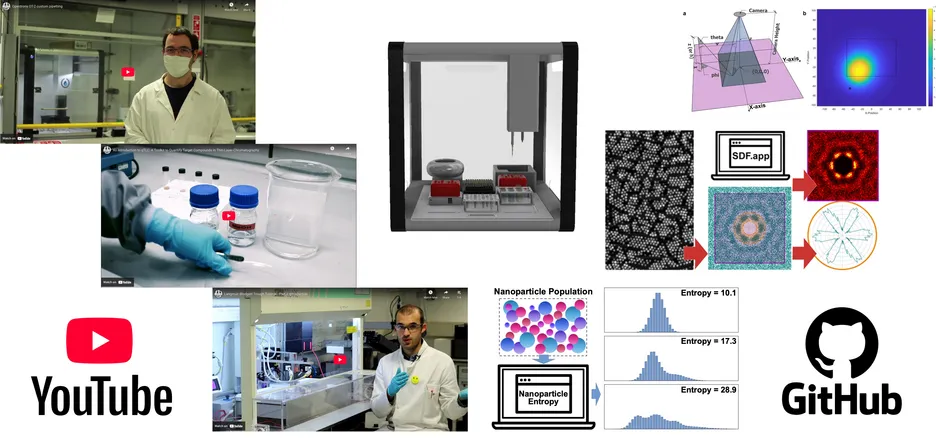
Method Development
Video Tutorials
Our YouTube channel has reached over 100,000 views, offering hands-on video tutorials for key lab techniques including Langmuir-Blodgett deposition, ellipsometry, and liquid handling automation. These visual resources complement our written protocols and open-source tools, making advanced experimental methods more accessible to students, educators, and researchers.
Ellipsometry Training Guide
Our ellipsometry guide by Barry Reid provides a step-by-step introduction to surface and thin film characterisation. It covers hardware setup, software use, and analysis of porous and non-porous samples. The guide is accompanied by supporting video tutorials to assist users in learning this powerful technique.
Langmuir-Blodgett Training Guide
Dr Alaric Taylor's Langmuir-Blodgett guide explains monolayer formation at air–water interfaces, from trough cleaning to isotherm control and deposition. It’s ideal for those working with interfacial assemblies and self-assembled films. A full video series is available on YouTube.
Open-Source Tools
We maintain an active GitHub repository featuring open-source software and analysis tools developed in our lab. Highlights include pipetting scripts for Opentrons OT-2, image analysis plugins, characterisation utilities, and full GUI-based applications. These tools support reproducible, high-throughput workflows across nanoscience, soft matter, and chemical engineering.
Quantitative Thin-Layer Chromatography (qTLC)
Our qTLC app enables easy and accurate quantification of target compounds in TLC experiments. Used in over 50 countries across six continents, it supports both teaching and research applications. A full toolkit including publication, student handouts, and experiments is freely available (ACS Journal of Chemical Education) with an intro video.
CORDERLY – Colloidal Ordering Analysis Software
CORDERLY is a standalone tool with GUI support for analysing 2D colloidal assemblies using the spatial distribution function (SDF). It reveals symmetry, spacing, and the range of order in real space—especially useful for moderately disordered systems. Available for Windows and MacOS, the software and ImageJ plugin are hosted on GitHub. Method details are described in Langmuir 2019, 35, 16605–16611.
Nanoparticle Entropy – A Robust Metric for Dispersity
We introduced nanoparticle entropy as a reliable, assumption-free measure of dispersity, valid across mono-, poly-, and heterodisperse systems. Based on Shannon entropy, it can be applied to any measurable object—particles, pores, or vesicles. The metric is independent of mean size and ideal for synthesis optimisation. Full method and validation appear in Chem. Mater. 2020, 32, 3701–3706, with software tools on GitHub.
Smart Centrifuge for Automated Pipetting Workflows
We developed an open-source smart centrifuge with IR-based positional control, enabling full integration with liquid handling robots like the Opentrons OT-2. Built from modular components, it supports automated synthesis and bioassay protocols, greatly improving workflow speed and reproducibility. With Arduino-based control, calibration features, and safety design, it’s ideal for cost-effective lab automation. Build instructions and code are available on GitHub, with full documentation in Journal of Open Hardware.
Optimising Light Source Positioning for Imaging Systems
Illumination uniformity and flux efficiency are critical in optical setups. We provide an open-source modelling tool that simulates thousands of light source positions to optimise illumination in custom imaging systems. Using a modified convex hull algorithm, users can filter configurations to maximise light delivery while minimising variation—ideal for fluorescence imaging and automated visual readouts. The model supports custom geometries, polar angles, and intensity fall-offs. Code and examples are freely available on GitHub, and the full method is detailed in JOSS.